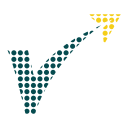The banking and financial services industry is adopting technologies such as UX/UI design to convert the data into an understandable form and bring transparency to the operations. Now, this industry communicates and gain customers through design as a language.
UX design technology works with the aim of creating such financial services that match users’ needs with banking capabilities. UX experience design refers to a process of developing products and services that aims at enhancing user satisfaction. This technology is incorporated in the banking industry by information technology experts to design the process of integrating the product that includes various important aspects, that includes, design, usability, function, and branding of a particular product. It also covers the interactivity and content of a website or any mobile app.
The traditional technologies are not that transparent and are designed by product-centered thinking, without the scope of any innovation. UX design has eliminated these limitations of traditional technologies by opening doors for innovation and bringing transparency to the process.
UX design is being integrated into a range of aspects that are beyond designing user interfaces. It is being used in areas, such as financial services, technology, digital platforms, business management, etc. It helps the industry to explore multiple aspects and work zones to create an ideal design for carrying out the services in an efficient manner. It is being used to fulfill the goal of making a website appealing and lucid so that it can be used by the customers effectively.
The IT application is being integrated with UX design in the financial industry for enhancing financial psychology in the operations. This is being done by gathering customer feedback and incorporate human psychology to conduct proper research by correctly interpreting the collection of data. This helps the financial services company to understand users’ needs, problems, financial behavior, etc., and develop services as per customers’ needs and preferences.
The tools used by UX design, such as artificial intelligence and predictive analytics also enhances user experience by analyzing and matching users’ needs through in-depth analytics and approaches. The artificial intelligence virtual assistance has the ability to predict user financial behaviors even when they are offline. These tools help in delivering personalized user experiences to a great extent.
UX tools and applications help in reducing human intervention by automating services such as information design, content management, etc. that helps the companies to attract and retain a greater number of customers by taking transactions on a digital platform and deliver excellent customer service with user-friendly tools and features.
This technology has enabled the users to access the banking factions with just a few clicks that can ease the process of bill payments, money transfers, balance checks, etc. combined with an enhanced level of security features that make the process safe and simple to use.
The user doesn’t have to navigate through different applications to access the account-summary, as UX design has enabled them to access account-summary and other such functions in a single application that help them to view a clear picture of their financial position.
This technology is also being used by the banking industry to provide proper guidance to the users regarding investments, and accurate financial planning options. It also offers the advantage of financial development by allowing automatic transfers of amount in diverse accounts as planned. The users can track their movement of funds with the use of UX design tools and applications and improve the present financial behavior, thereby, having an opportunity to plan their future expenses.
UX design has simplified the process of money transfers and bill payments by synchronizing the process with bank database at a single platform. This eliminates the need for the user to carry out the process via navigating through different options as it can easily be done by moving into a single application and perform the process. This also helps in saving a lot of time and manual efforts, thereby delivering seamless user experience.
The banking and finance operations have become more productive with the use of automated application and tools, which, in turn, helps in reducing human errors and deliver accurate results. The efficient transactions have not only improved the user experience, but also helped the companies to reduce their costs.
The banks are now able to deliver personalized products and services, that has enhanced return on marketing strategies and conversion rates. The customer specific queries can now be responded with timely replies, without any delays and the need for the customers to visit the bank for every query.
The information technology experts have transformed their ways of developing IT application by incorporating advanced tools of UX design which has made the financial industry to become more flexible and adjust as per the changing trends and conditions of the market.
UX technology has the ability to enhance micro-interactions in the industry that help the companies to meet the needs of the customer in a digital space with the help of simple and efficient workflows. The websites are becoming more and more dynamic by implementing micro-interactions on the basis of descriptive animation and enhancing frictionless flow.
This technology works by applying diverse approaches to focus on behavioral patterns of the users on the basis of business and technological aspects of the transactions.
UX design has changed the realm of the banking and financial services sector by infusing advanced applications and tools and transformed the operations of the IT department. This technology has majorly contributed to simplifying the process of analyzing a huge customer database and made the financial industry more flexible. It covers all the functionalities of the banking sector and focuses on the visualization of the website.





